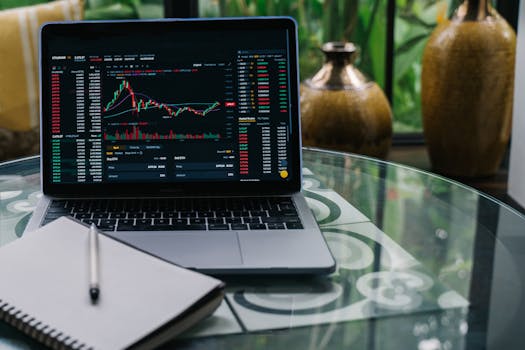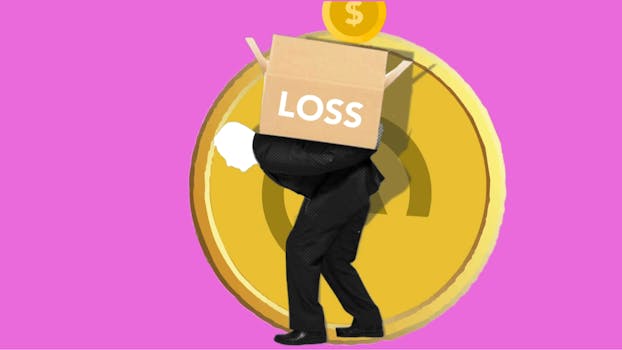Companies with the best and the worst fundamentals.
Lists of companies in NSE500 with the best and the worst fundamentals...
Lists of companies in NSE500 with the best and the worst fundamentals...
List of the latest important filings for NSE500....
Lists of companies in NSE500 with the best and the worst technicals...

This article provides an analysis of how India's markets and banking sector...

The article discusses the significant gains of the Russell 2000 index, highlighting...

This article delves into the potential impact of the recently announced U.S....

In the ever-evolving landscape of global finance, investors face a myriad of challenges and uncertainties that can impact their portfolios. As of September 2025, the economic climate is characterized by volatility driven by various factors, ranging from geopolitical tensions to fluctuating interest rates. To navigate this complexity, investors must remain vigilant and equipped with a comprehensive risk checklist. Below, we outline seven critical red flags that every investor should monitor.
Valuation remains a cornerstone of investment analysis. As per recent data, the average price-to-earnings (P/E) ratio of the S&P 500 stands at approximately 22, significantly higher than its historical average of about 16. Such elevated levels can suggest that stocks are overvalued, exposing investors to a potential market correction. Careful consideration of intrinsic values versus market prices is crucial, especially in sectors witnessing rapid expansion without corresponding earnings growth.
Liquidity risk is paramount, particularly in turbulent markets. For instance, recent events in the commercial real estate sector have highlighted vulnerabilities, with some funds reporting withdrawal restrictions as they struggled to sell assets quickly. Investors should scrutinize trading volumes and the overall liquidity of their assets. Low liquidity can lead to significant difficulties in selling a position without substantially affecting its price.
Geopolitical risks have escalated in recent months, with ongoing conflicts impacting global supply chains. The war in Eastern Europe has not only affected energy prices, leading to a 40% year-over-year increase in oil costs but also created ripple effects in various sectors, including agriculture and manufacturing. Investors need to evaluate how geopolitical issues might adversely affect their investments, especially those with international exposure or reliance on global supply networks.
The quality of a company’s earnings can be a critical indicator of its financial health. Recent alarming trends have shown an increase in companies reporting adjusted earnings that significantly deviate from Generally Accepted Accounting Principles (GAAP). Approximately 30% of S&P 500 companies have issued non-GAAP earnings reports, which can obscure a true representation of profitability. Investors should dig deeper into earnings reports, looking for consistent cash flow and prudent accounting practices to avoid pitfalls associated with inflated earnings.
Concentration risk arises when a portfolio is heavily weighted in a single investment or industry. Currently, technology stocks comprise around 28% of the S&P 500, up from 22% just two years ago. This over-concentration leaves investors vulnerable to significant losses should the sector face headwinds. Diversification across different asset classes, sectors, and geographical regions is essential in mitigating this risk and ensuring a more balanced investment approach.
The U.S. Federal Reserve's recent decisions regarding interest rates have created anticipation and uncertainty in the market. Interest rates are currently hovering around 4.25% falling from 5.5%. Any unexpected changes in rate policy can result in market volatility, directly impacting equity valuations and bond yields. Investors should stay informed about the Fed’s monetary policy signals to adjust their strategies accordingly.
The resurgence of retail investor activity in financial markets has prompted discussions about speculative behavior. As marked by the phenomena seen in meme stocks and cryptocurrency markets, retail investor-driven price movements can lead to unsustainable asset inflation. A recent analysis revealed that around 85% of trades on certain platforms are driven by retail investors. Monitoring trends in retail engagement and sentiment is crucial for assessing the stability and sustainability of markets.
In conclusion, navigating today’s investment landscape requires an informed and proactive approach to risk assessment. By identifying these seven red flags and conducting thorough due diligence, investors can not only protect their portfolios but also seize opportunities amid uncertainty.

An analysis of how lowered interest rates influence startup funding, IPO opportunities,...

The article delves into the current foreign exchange landscape shaped by central-bank...